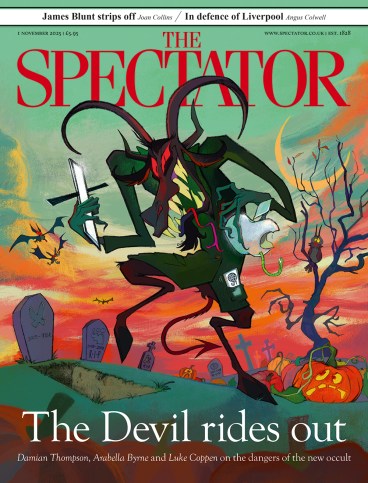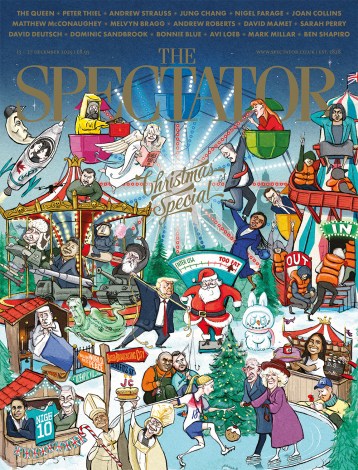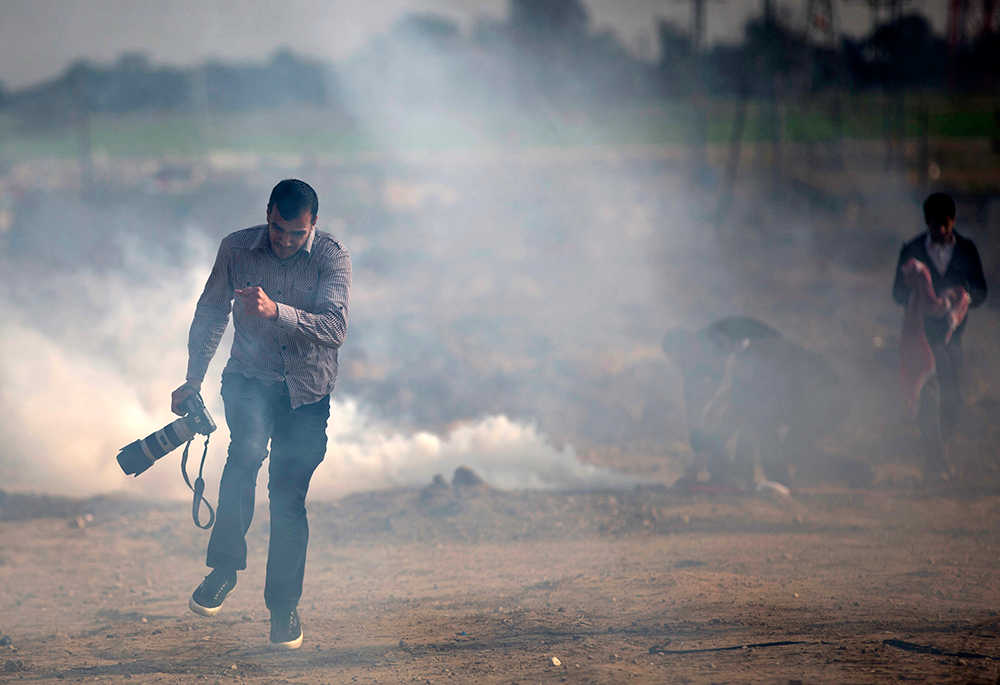
Future proof
Sir: Douglas Murray asks why Enoch Powell’s ‘Rivers of Blood’ speech understated the problems (‘Imagine what Enoch Powell might have said’, 25 October). The simple answer is that it couldn’t have said everything, but many of the omissions cited are referred to in Powell’s later speeches.
During the 1970 general election campaign in Birmingham, for instance, Powell noted that ‘this country is today under attack by forces which aim at the actual destruction of our nation and society as we know or can imagine them’. He gave many examples of a ‘new psychological weaponry’ rendering the majority ‘passive and helpless’ by asserting ‘manifest absurdities as if they were self-evident truths’.
Most important of all, he referred to the ‘exploitation of what is called “race” as a common factor’ linking ‘the operations of the enemy on several different fronts’. He explained: ‘The people of this country are told that they must feel neither alarm nor objection to a West Indian, African and Asian population which will rise to several millions being introduced into this country. If they do, they are “prejudiced”, “racialist”, “un-Christian”.’
All this he described as nonsense, ‘but it is nonsense which it is already obligatory for academics and journalists, politicians, and parties, to accept and mouth, upon pain of verbal denunciation and physical duress’.
It’s true that what he was most criticised for at the time – exaggeration of the future size of the immigrant population – turned out to be an underestimate. But overall, I don’t think he’d have been surprised by what’s happening today. I think he’d have been more likely to say: ‘I told you so.’
Richard Ritchie
London SW18
Naughty but nice
Sir: Sad though the death of Lady Annabel Goldsmith is, it has given your readers a chance to remember the incomparable Taki (‘Best of friends’, 25 October). How I have missed his richly gossipy, wonderfully naughty column. Please can you return him to us all on a permanent basis.
Nicko Williams
Heswall, Wirral
Fact finding
Sir: Tom Gross (‘Useful idiots’, 25 October) might wring his hands at the parroting of Hamas propaganda by western news outlets, but as their reporters are barred from Gaza by the Israelis and unable to see the truth on the ground for themselves, it is hardly surprising that these outlets can only report what’s available to them. In their defence, the more responsible of them, operating from Jerusalem or Tel Aviv, invariably remind us that their journalists are not allowed into Gaza and the details reported cannot be verified.
John Cane
Charlton Kings, Gloucestershire
Pearl of wisdom?
Sir: In his review of Andrew Graham-Dixon’s book on Vermeer (Books, 25 October), Philip Hensher dismisses out of hand the author’s proposal that Vermeer is portraying Mary Magdalene in ‘Girl with a Pearl Earring’, saying: ‘Pearls are frequently associated with purity and virginity – not very appropriate in the case of the Magdalene.’ He has himself fallen into the common trap of associating Mary Magdalene with a woman in the Gospels said to be ‘a great sinner’, but given no name. Any attentive reading shows that Mary Magdalene was not that woman, but someone who became a very close disciple of Jesus after he’d ‘healed her of evil spirits and infirmities’. Perhaps Vermeer had indeed understood that.
James Pullen
St Ives, Cornwall
Good as New
Sir: I was pleased to read Tim Abrahams mention the ‘overlooked’ Wolfson College, Oxford (Arts, 25 October). Visiting every college earlier this year, I found Wolfson a little marvel: coherent, humane and understated. In time, I suspect it will be recognised in the same lineage as Keble and New College – a bold act of architectural confidence. Like Keble, it rejects the pieties of its day; like New, it achieves harmony between the domestic and the collegiate.
Charlie Corn
Hazeley Heath, Hampshire
State of the art
Sir: Those fortunate to visit the Palazzo Strozzi regularly (Arts, 25 October) will puzzle at Matthew Bell’s assertion that the Beato Angelico exhibition ‘is a major departure for a gallery that usually hosts blockbusters by Jeff Koons, Marina Abramovich and Tracey Emin’. Exhibitions of contemporary artists are easier to organise, to obtain permissions for and to crate up. Those that elucidate earlier periods, drawing on global scholarship and multiple collections, take much longer.
Nonetheless, the Palazzo Strozzi has, to its credit, provided several such exhibitions in recent years.‘Blockbusters’ of Bronzino (2010) and Springtime of the Renaissance (2013) were followed by shows featuring Pontormo and Rosso (2014) and Verrocchio, Master of Leonardo in 2019. Donatello (2022), a joint exhibition with the Bargello, travelled to the V&A, and Apollo magazine even voted it the exhibition of the year.
Nicholas Cranfield
London SE3
Nightmare scenario
Sir: Lloyd Evans’s experience of bowel cancer screening (No life, 4 October) reminded me of a dream the screening prompted for me. I was in court as a character witness and the prosecution asked if I’d ever sent excrement through the post. My reply ‘Yes, but it was…’ got drowned out by ‘No further questions m’Lud’.
Phillip Pennicott
London E18
Write to us letters@spectator.co.uk







Comments